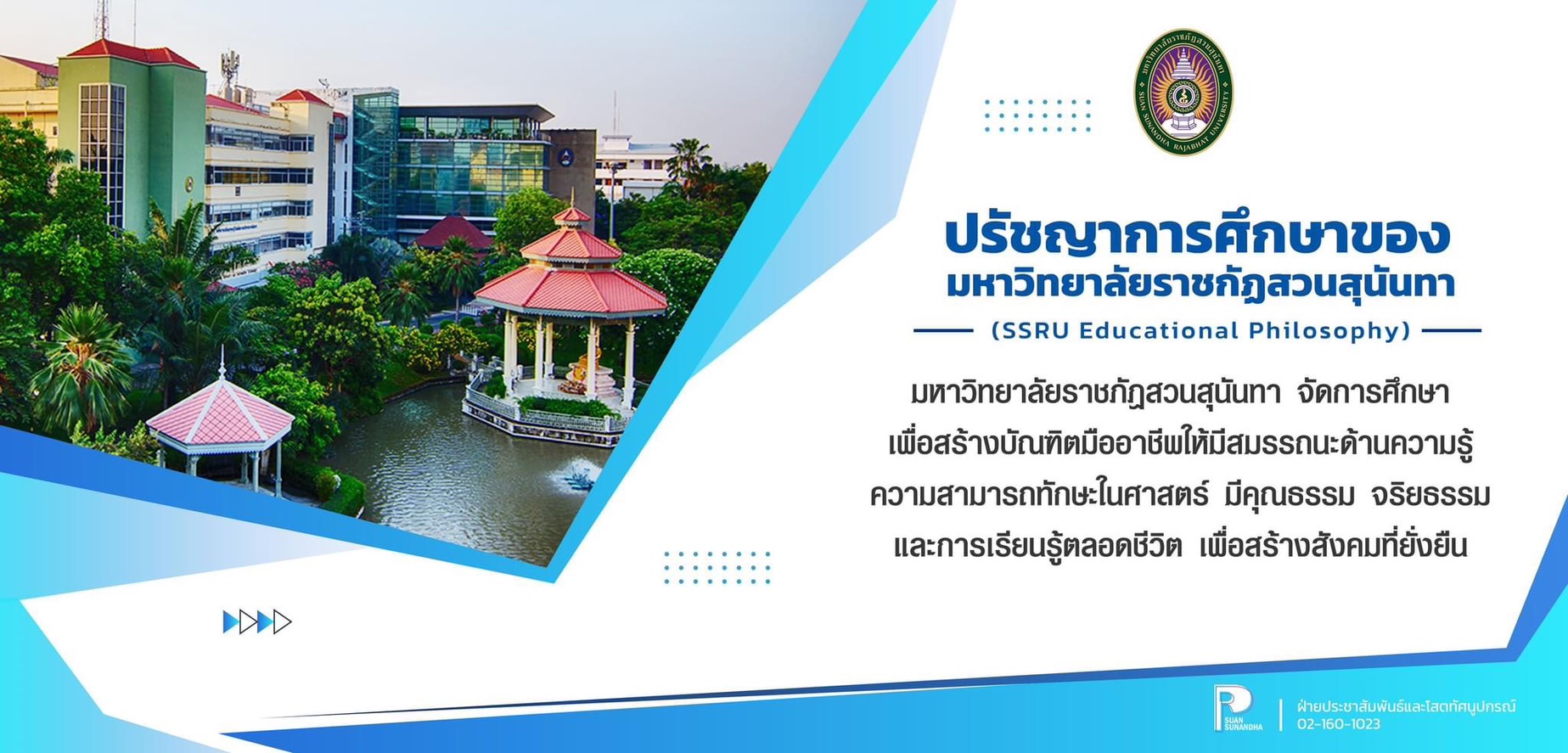5 ต้นสายปลายเหตุสำหรับในการเลือกมหาวิทยาลัยที่จะต้องคิดถึง
 ถึงฤดูสอบการแข่งขันเข้าเรียนต่อในระดับชั้นมหาวิทยาลัยราชภัฏของน้องๆชั้นม 6 ทั้งประเทศ ซึ่งวันนี้พี่ๆราชภัฏสวนสุนันทา จะมาชี้แนะเทคนิคในการเลือกมหาวิทยาลัยซึ่งมี 5 ปัจจัยมีอะไรบ้างไปดูกันได้เลย
ถึงฤดูสอบการแข่งขันเข้าเรียนต่อในระดับชั้นมหาวิทยาลัยราชภัฏของน้องๆชั้นม 6 ทั้งประเทศ ซึ่งวันนี้พี่ๆราชภัฏสวนสุนันทา จะมาชี้แนะเทคนิคในการเลือกมหาวิทยาลัยซึ่งมี 5 ปัจจัยมีอะไรบ้างไปดูกันได้เลย
 1.การเดินทางสบาย ในการไปมหาวิทยาลัยนั้น จึงควรเลือกอยู่ห้องพักใกล้มหาวิทยาลัยหรือเพื่อสบายสำหรับในการเดินทางไปเรียน สำหรับสวนสุนันทา เรามีทั้งหอพักในมหาวิทยาลัยและหอนอกมหาวิทยาลัยสวนสุนันทาให้เลือกมากมายก่ายกอง ซึ่งน้องๆสามารถที่จะเลือกได้ตามอัธยาศัยสบายโดยเฉพาะสวนสุนันทา พวกเราเป็นมหาวิทยาลัยที่อยู่ในจังหวัดกรุงเทพ ฉะนั้นการเดินทางสะดวกอยู่แล้ว แล้วก็ควรจะดูว่าวิทยาเขตมีให้เลือกที่ไหนบ้าง ถ้าว่าไม่สะดวกที่จะศึกษาต่อในจังหวัดกรุงเทพ ก็สามารถเลือกวิทยาเขตของราชภัฏสวนสุนันทา ได้ซึ่งจะมี 2 วิทยาเขตหมายถึงวิทยาเขตนครปฐมรวมทั้งวิทยาเขตสมุทรสงคราม สำหรับผู้ที่อยู่ 2 จังหวัดนี้หรือจังหวัดใกล้เคียงไม่สบายที่จะเดินทางเข้ามาศึกษาต่อในจังหวัดกรุงเทพก็สามารถเลือก 2 วิทยาเขตนี้ได้ เพราะว่าทางมหาวิทยาลัยสวนสุนันทา เราเปิดรับนักศึกษาจำนวนไม่ใช่น้อยและมีหลักสูตรให้เลือกหลากหลาย
1.การเดินทางสบาย ในการไปมหาวิทยาลัยนั้น จึงควรเลือกอยู่ห้องพักใกล้มหาวิทยาลัยหรือเพื่อสบายสำหรับในการเดินทางไปเรียน สำหรับสวนสุนันทา เรามีทั้งหอพักในมหาวิทยาลัยและหอนอกมหาวิทยาลัยสวนสุนันทาให้เลือกมากมายก่ายกอง ซึ่งน้องๆสามารถที่จะเลือกได้ตามอัธยาศัยสบายโดยเฉพาะสวนสุนันทา พวกเราเป็นมหาวิทยาลัยที่อยู่ในจังหวัดกรุงเทพ ฉะนั้นการเดินทางสะดวกอยู่แล้ว แล้วก็ควรจะดูว่าวิทยาเขตมีให้เลือกที่ไหนบ้าง ถ้าว่าไม่สะดวกที่จะศึกษาต่อในจังหวัดกรุงเทพ ก็สามารถเลือกวิทยาเขตของราชภัฏสวนสุนันทา ได้ซึ่งจะมี 2 วิทยาเขตหมายถึงวิทยาเขตนครปฐมรวมทั้งวิทยาเขตสมุทรสงคราม สำหรับผู้ที่อยู่ 2 จังหวัดนี้หรือจังหวัดใกล้เคียงไม่สบายที่จะเดินทางเข้ามาศึกษาต่อในจังหวัดกรุงเทพก็สามารถเลือก 2 วิทยาเขตนี้ได้ เพราะว่าทางมหาวิทยาลัยสวนสุนันทา เราเปิดรับนักศึกษาจำนวนไม่ใช่น้อยและมีหลักสูตรให้เลือกหลากหลาย
 2.พิเคราะห์กิตติศัพท์ของมหาวิทยาลัยราชภัฏ นี่คือสิ่งที่สำคัญลำดับต้นๆที่จะต้องให้ความสนใจเนื่องจากมหาวิทยาลัยราชภัฏในประเทศไทย มีจำนวนไม่น้อยดังนั้นการเลือกเกียรติศักดิ์ของมหาวิทยาลัยเป็นใบเบิกทางที่สำคัญที่จะทำให้น้องๆก้าวเข้าไปสู่การทำงานในสาขาวิชาอาชีพที่อยากในอนาคต เรียกได้ว่ามหาวิทยาลัยที่น้องๆเลือกควรจะมีความเชี่ยวชาญทางด้านคณะและสาขาวิชาที่เรียนโดยตรง สำหรับสวนสุนันทา เราเปิดหลักสูตรการเรียนการสอนตั้งแต่ระดับชั้นปริญญาตรี หลักสูตรนานาประเทศปริญญาตรีหลักสูตรปริญญาโท รวมทั้งหลักสูตรปริญญาเอก รวมทั้งเป็นมหาวิทยาลัยราชภัฏชั้น
2.พิเคราะห์กิตติศัพท์ของมหาวิทยาลัยราชภัฏ นี่คือสิ่งที่สำคัญลำดับต้นๆที่จะต้องให้ความสนใจเนื่องจากมหาวิทยาลัยราชภัฏในประเทศไทย มีจำนวนไม่น้อยดังนั้นการเลือกเกียรติศักดิ์ของมหาวิทยาลัยเป็นใบเบิกทางที่สำคัญที่จะทำให้น้องๆก้าวเข้าไปสู่การทำงานในสาขาวิชาอาชีพที่อยากในอนาคต เรียกได้ว่ามหาวิทยาลัยที่น้องๆเลือกควรจะมีความเชี่ยวชาญทางด้านคณะและสาขาวิชาที่เรียนโดยตรง สำหรับสวนสุนันทา เราเปิดหลักสูตรการเรียนการสอนตั้งแต่ระดับชั้นปริญญาตรี หลักสูตรนานาประเทศปริญญาตรีหลักสูตรปริญญาโท รวมทั้งหลักสูตรปริญญาเอก รวมทั้งเป็นมหาวิทยาลัยราชภัฏชั้น
 มหาวิทยาลัยราชภัฏสวนสุนันทาความเป็นยอดทางการศึกษา
มหาวิทยาลัยราชภัฏสวนสุนันทาความเป็นยอดทางการศึกษา